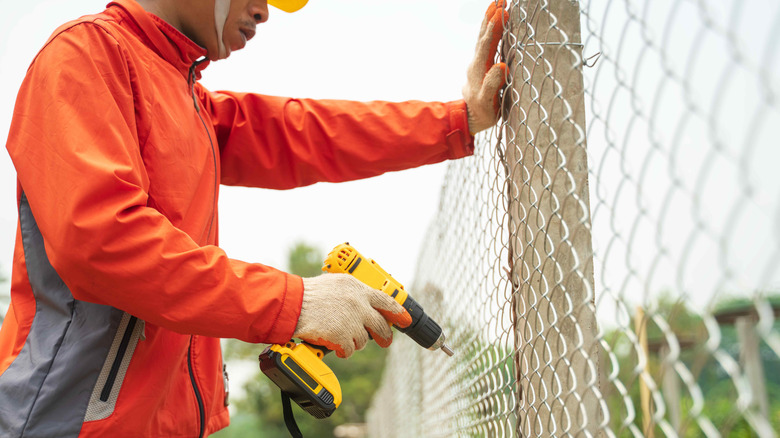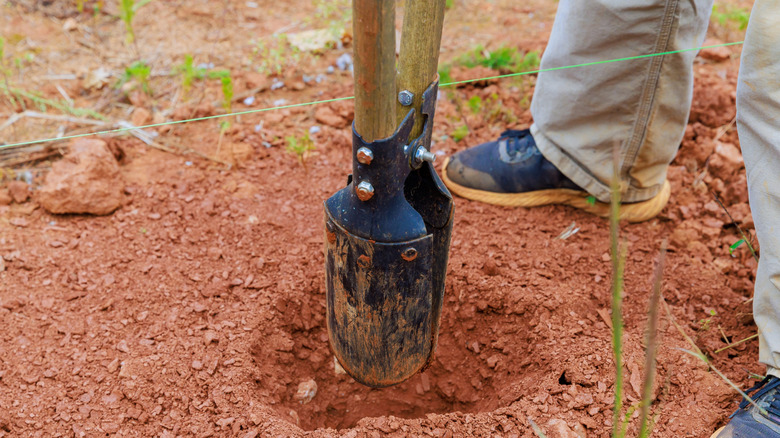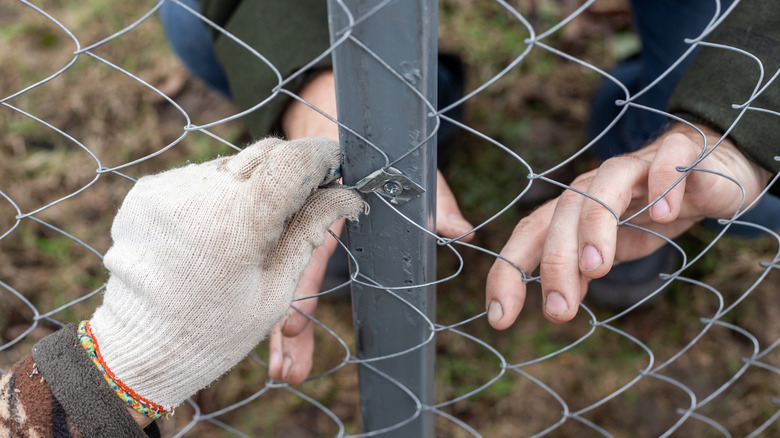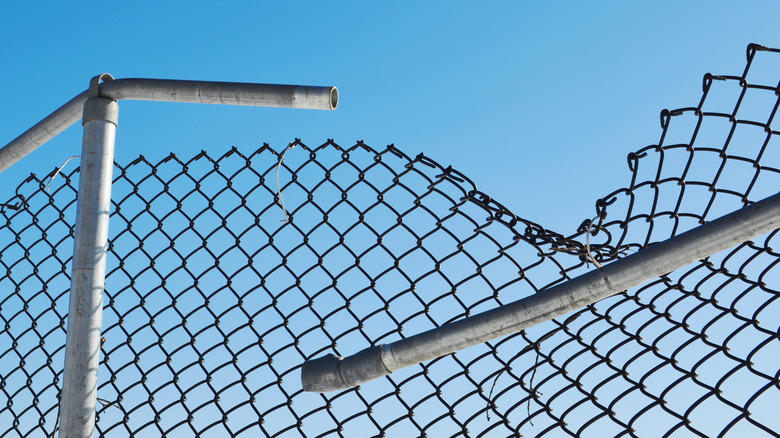Mistakes Everyone Makes When Installing A Chain Link Fence
When you want an effective fencing choice that's affordable, installing a chain link fence DIY style is a popular option. Chain link costs between $5 and $20 per linear foot, which is usually cheaper than other fencing materials, like wood, which can cost $20 to $50 per linear foot. If you are DIY-ing the chain link fence to save as much money as possible, you want to be confident in your installation techniques. You don't want to make a mistake and ruin the materials, especially when you're trying to save money.
Some of the most common errors with chain link fences include problems with installing the posts, failing to tighten the tension on the roll of fencing, not properly planning for gates, and using cheap materials that don't last. Although some mishaps when fitting chain link are similar to mistakes everyone makes when installing a fence, regardless of the material – like not verifying the property line, failing to obtain the necessary local building permits, or not having utility lines marked – these specific blunders are unique to chain link fences. Learn how each of these mistakes can happen and how to avoid them.
Not using the right posts in the right places is a major error
One of the biggest mistakes people make when installing the posts for the chain link fence is not setting the terminal posts first. These are the poles at the corners of the layout, at the ends, and anyplace where you'll attach a gate. Terminal posts serve as an anchor for the fence and need to be secure to support the tension as you build out the rest of the chain link. They have a wider diameter than the standard posts.
When installing posts for chain links, you might be tempted to use a fence post driver tool to make the installation easier. However, keep in mind, it would be a mistake to pound the poles in an area with loose soil that wouldn't hold them firmly. The majority of companies that manufacture chain link fences recommend using concrete in the holes to secure the posts.
Another mistake when digging holes for the chain link posts is failing to create a pit of the proper depth and shape. When managing the shape of the pit, you don't want to create a carrot- or cone-shaped hole, where the top is wider in diameter than the bottom. Instead, you want a bell-shaped hole, where the bottom diameter is as wide or wider than the top. Avoid digging your pit at the wrong depth, too. It should be about one-third of the height of the post, such as 2 feet deep for a 6-foot post (leaving only 4 feet above the ground).
Failing to create tension on the chain link fence is a security blunder
Although you can try to stretch the chain link fence material by hand to make it as tight as possible, this is a mistake. It's also a significant error to fail to use the specific tools needed to do the job properly. A fence stretcher tool is important for applying the tension along the fence evenly. You should also use a come-along cable puller, which serves as a winch to tighten the material more taut than you can do by hand. A chain link fence with too much slack could suffer wind damage or eventually sag, shortening the lifespan of the installation.
Another mistake some people make in this step of the installation is over-tightening the mesh. This could damage the posts, as excess tension could bend or tilt the metal. The chain link fence mesh is at the proper tightness when you can compress or squeeze any individual link by hand and it only moves roughly quarter of an inch.
If you aren't adding a rail along the bottom, you should add a tension wire. Failing to do so is a major error. Installing a tension wire along the bottom or top of the chain link can be challenging, but it's a necessary step to ensure the fence will have the proper strain. Don't skip this procedure because it's difficult or takes too much time. Pets could escape and critters can come in when gaps form along the bottom of the chain link fence due to a missing tension wire or rail.
Adding gates to a chain link fence creates lots of opportunities for mistakes
When building your chain link fence, failing to plan the entire layout – including gates – is a common problem. For a DIY installation, some people might prefer to jump in and start the process as quickly as possible while skipping the planning stage. Because you could use a few different styles and sizes of gates, planning ahead is vital to ensure the posts line up properly. The best option is to draw the layout you have for the chain link fence on graph paper, using the grid to ensure you're drawing the fence to scale. Mark the gates and post locations. Then use your scale drawing to indicate the location of gates and gate posts with spray paint or another marker on the ground. Failing to double-check your measurements and marks on the ground would be another significant mistake, as accurate measurements are vital for a secure gate installation.
One more common problem is when the terminal posts aren't anchored for the gates correctly. The terminal posts hold the most tension and protect the structure of the fence. These poles must be larger in diameter than other posts in the fence to handle the stress. Because the gate is the only part of the chain link that moves, it puts a unique kind of stress on these posts. Failing to use terminal posts on both sides of the gate to handle all that stress would be a major oversight.
Using cheap materials is a devastating error for longevity
It's not a bad thing to try to build a DIY chain link fence yourself to save some money. This is a job experienced DIY-ers can do. However, trying to save even more money by using cheap materials is a mistake. Low-quality materials might not stand up to the weather, leading to rust or a warped fence that'll cost you more in the long run.
Further, don't be fooled by the gauge measurement of the metal in the chain link mesh. Although it seems like a 12-gauge chain link fence would be tougher than a 9-gauge fence, that's not the case. Smaller numbers in these measurements indicate heavier wire. An 11-gauge chain link fence is standard. If you want a quality fence that's more likely to last, select an 11- or 9-gauge wire, rather than a 12-gauge one.
Finally, people often make the mistake of not selecting a material for the chain link that can stand up to the weather conditions in their environment. If you frequently have high humidity and want a fence that will resist rust, look for an aluminized chain link. It won't oxidize, giving you long-lasting results. If your area has frequent storms that blow debris around, install galvanized steel. It can withstand a lot of force without showing damage while also combating corrosion.




